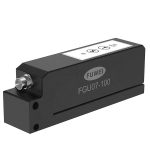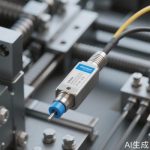In the world of industrial automation, medical devices, automotive systems, and countless other applications, pressure sensors are the unsung heroes. These tiny yet powerful components measure pressure with incredible accuracy, ensuring that systems operate safely and efficiently. However, even the most advanced pressure sensors can drift over time due to environmental factors, wear and tear, or simple aging. That’s where pressure sensor calibration comes into play—a critical process that guarantees your sensors deliver reliable and precise data.
Pressure sensor calibration is the method of comparing a sensor’s output to a known reference standard and adjusting it to minimize any discrepancies. Think of it as tuning a musical instrument: without regular tuning, the instrument may produce off-key notes, just as an uncalibrated sensor can provide inaccurate readings. Calibration ensures that your pressure measurements are consistent, repeatable, and trustworthy, which is vital for maintaining quality control, safety standards, and operational efficiency.
Why is calibration so important? In industries like aerospace or healthcare, even a minor error in pressure reading can lead to catastrophic outcomes. For instance, in an aircraft, incorrect cabin pressure readings could compromise passenger safety. Similarly, in medical ventilators, precise pressure control is essential for patient well-being. Regular calibration not only prevents such risks but also extends the lifespan of your sensors, reducing long-term costs and downtime.
The calibration process typically involves several key steps. First, the sensor is exposed to a series of known pressure values generated by a highly accurate reference instrument, often traceable to national or international standards. The sensor’s output is then recorded and compared against these reference values. Any deviations are corrected through adjustments either in hardware (e.g., potentiometers) or software (e.g., calibration coefficients). Advanced calibration systems can automate this process, making it faster and more reliable.
When should you calibrate your pressure sensors? While there’s no one-size-fits-all answer, factors such as the sensor’s application, operating environment, and manufacturer recommendations play a crucial role. High-stress environments—like those with extreme temperatures, vibrations, or corrosive media—may require more frequent calibration. Many industries follow a periodic schedule, such as quarterly or annually, but real-time monitoring systems can also trigger calibration alerts based on performance drift.
Choosing the right calibration equipment is equally important. From portable handheld calibrators for field service technicians to benchtop systems for laboratory settings, the market offers a variety of tools tailored to different needs. Look for devices with high accuracy, user-friendly interfaces, and compatibility with your sensor types. Additionally, consider software solutions that document calibration results for compliance and auditing purposes, which is especially valuable in regulated industries.
In today’s era of Industry 4.0 and the Internet of Things (IoT), pressure sensor calibration is evolving. Smart sensors with self-diagnostic capabilities can now predict when calibration is needed, reducing manual intervention. Cloud-based platforms enable remote calibration and data logging, facilitating seamless integration into predictive maintenance strategies. Embracing these technologies not only enhances accuracy but also drives operational excellence.
In conclusion, pressure sensor calibration is not just a maintenance task—it’s a cornerstone of reliability and precision in modern technology. By understanding its importance and implementing a robust calibration strategy, you can ensure that your systems perform at their best, minimize risks, and achieve long-term success. Don’t let inaccurate readings hold you back; invest in calibration and unlock the full potential of your pressure sensing applications.




Leave a Message